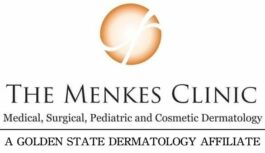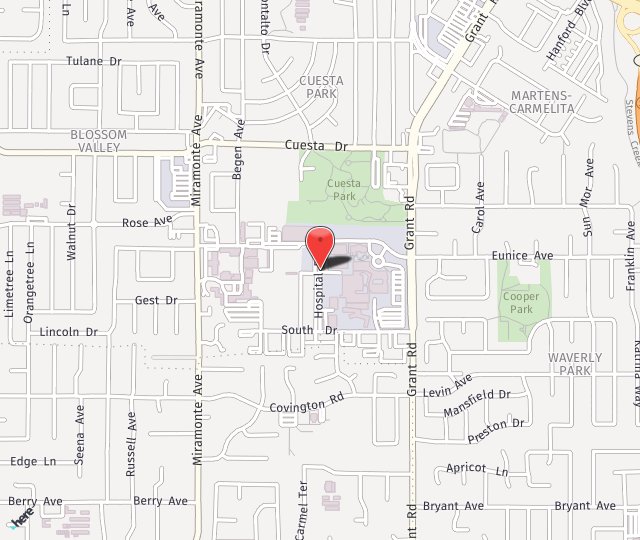In Mountain View CA
Mohs surgery is primarily used to treat basal and squamous cell carcinomas, the two most common types of skin cancer, although it can be used for melanoma and other types of cancer. Mohs surgery is often recommended for recurring cancers, as well as those in difficult-to-treat areas, such as the nose, eyelids, lips, hairline, hands, feet and genitals, in which preserving as much tissue as possible is extremely important.
Mohs micrographic surgery is the most advanced and precise treatment for skin cancer. During Mohs surgery, cancerous tissue is removed in small sections and examined using a microscope. If malignant cells are found at the edges or the base, more tissue is removed until the cancer is completely cleared. This comprehensive microscopic examination helps to target only cancerous tissue, significantly reducing damage to healthy surrounding tissue. Developed by Frederic E. Mohs, M.D., in the 1930s, Mohs surgery excises not only the visible tumor but any "roots" extending beneath the surface of the skin. Five-year cure rates of up to 99 percent for first-time cancers and 95 percent for recurring cancers have been documented.
What Is Mohs Surgery?
Mohs surgery is considered the most effective technique for removing many basal cell carcinomas and squamous cell carcinomas, the two most common types of skin cancer. Mohs surgery eliminates virtually all of the guesswork whether the doctor’s excision removed all of cancer. That’s because Mohs is performed in stages. The first excision is made, and the sample is immediately sent to the lab. The entire outer ring of the sample is tested to see if any cancer cells can still be found. If so, the doctor removes another ring of tissue, and the process is repeated. This is repeated until no cancer cells are found. The incision is then permanently closed, and the procedure is complete.
In other excisions of skin cancer, the doctor removes a larger area to ensure cancer has been removed. The problem with this is that there’s no way to know all of the outer cells have been removed. To help reduce the possibility of remaining cells, a larger area is removed, which may remove more healthy tissue than necessary.
That contributes to Mohs having a 99 percent cure rate for skin cancers not previously treated.
Is Mohs Surgery The Best Treatment Option For All Skin Cancers?
Mohs surgery is far and away from the best treatment for basal cell and squamous cell carcinomas. This is because Mohs surgery has over a 99 percent cure rate on skin cancers that were not previously treated. On areas that were previously treated with other excision methods and the cancer was fully removed, Mohs is 94 percent successful for full removal.
If your skin cancer occurs on your trunk or your extremities, Mohs is only used in certain circumstances.
Melanoma can be treated with Mohs, especially on the face. But it is biologically different from basal cell and squamous cell carcinomas, and if it may have spread to the lymph nodes or elsewhere, Mohs won’t be used. Still, more and more melanomas are proving they can be effectively removed with Mohs surgery.
What are the Risks Of Mohs Surgery?
In addition to the risks associated with any surgery, those related to Mohs surgery include the following:
- Temporary/permanent surgical-area numbness
- Temporary/permanent surgical-area weakness
- Skin discoloration
- Itching
- Shooting pain
- Keloid scar

The Mohs Surgery Procedure
Mohs surgery is performed as an outpatient procedure in a physician’s office. During Mohs surgery, the treatment area is numbed with a local anesthetic. Small layers of skin are removed, and each layer is examined microscopically to see if it contains malignant cells. Excision continues until the cancer is completely removed. Most Mohs procedures can be performed in three or fewer stages, and take approximately 4-8 hours.
How Long Does Mohs Surgery Take?
If more than one or two rounds are necessary, the entire process can take up to several hours. It’s worth it, though, considering Mohs takes the least amount of tissue but has the highest cure rate of any treatment method. Due to the testing phases, Mohs surgery involves a lot of downtime for the patient, as he or she waits for the lab results to see if the outer ring was clean. During these times, the patient can read, watch videos, or even leave the room.
Most Mohs procedures can be performed in three or fewer stages, and take approximately 4-8 hours.
Recovery From Mohs Surgery
After Mohs surgery, patients experience mild discomfort, bleeding, bruising and swelling. Pain medication is prescribed if needed, although most patients require only over-the-counter medication.
Mohs surgery leaves scars, although they are often smaller than those from other excision procedures. Reconstructive procedures, including skin flaps and skin grafts, can reduce the prominence of scars; they can be performed at the same time as the Mohs surgery or at a later date. If possible, surgical techniques, including placing stitches in the skin’s natural creases or out-of-sight areas, are used to make scarring less visible.
Will Mohs Surgery Leave A Scar?

With standard local excision, there is no way to completely know if all the cells have been removed. Our team has extensive experience with Mohs surgery and with subsequent options for minimizing scarrings, such as skin grafting or the use of a skin flap.
Is Mohs The Most Cost-Effective Treatment Option?
That depends. If you have a very small lesion, it probably wouldn’t be necessary to use Mohs techniques, as something as simple as a curette could possibly be all that’s needed. However, if the borders of your skin cancer are hard to define, or if the growth is in an area where it’s important to save as much healthy tissue as possible, such as around the eyes, ears, nose, mouth, hands, feet, and genitals, then Mohs would not only provide the best cure rate but would probably also be the most cost-effective method. This is because the odds of the patient needing another excision in the future would be virtually nil. Also, because less tissue is removed, plastic surgery may be able to be avoided.
Will Mohs surgery be covered by my health insurance?
Yes, this procedure is covered by insurance.
Following Mohs surgery, regular doctor visits to check that cancer has not recurred or that new cancer has grown are recommended.
An educational video depicting the procedure as well as more information about Mohs can be found at: www.skincancermohssurgery.org
Schedule A Consultation
To schedule a consultation or to learn more about our Mohs Surgery procedures, contact us today at 650-962-4600. Our practice serves Mountain View, CA, and the surrounding areas.


